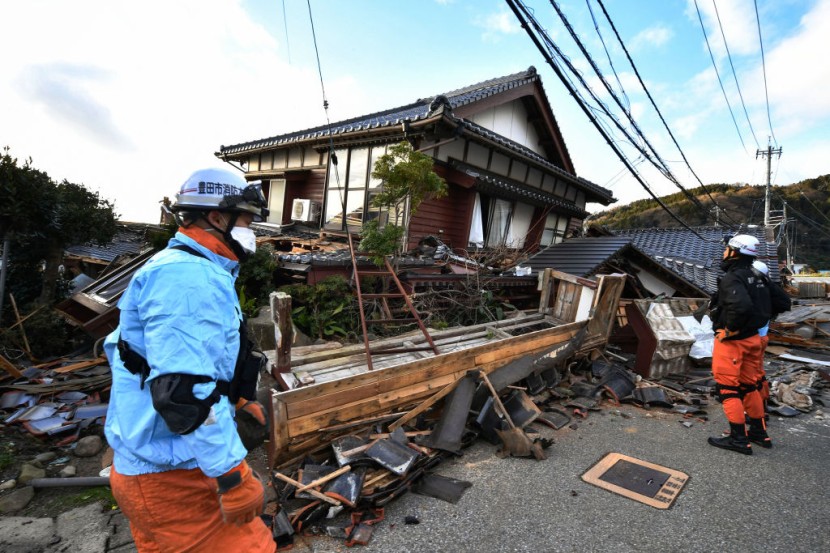Minae Akiyama's New Year's celebration in Ishikawa prefecture took a horrifying turn as a 7.5-magnitude earthquake struck, leaving her family scrambling for safety.
Speaking from a shelter in Nanao, Akiyama shared the intense fear and chaos that ensued during the quake, as per CNN.
Devastating Quake Hits Ishikawa, Japan

The quake, which rattled Ishikawa prefecture on the main island of Honshu, triggered devastating tsunami waves, a major fire, and extensive road damage. The Noto peninsula bore the brunt of the destruction, with hundreds of buildings in towns like Wajima and Suzu reduced to ashes. Satellite images released on Wednesday provided a glimpse of the widespread devastation.
Authorities confirmed the death toll at 62, with over 300 injured, 20 of them seriously. As rescue efforts intensified, Prime Minister Fumio Kishida emphasized the race against time, urging everyone to prioritize saving lives.
The Japan Meteorological Agency issued a heavy rain warning, compounding the challenges faced by rescuers. In Suzu, Mayor Masuhiro Izumiya reported near-total destruction, with about 90% of houses in the town either completely or almost completely destroyed.
The aftermath saw more than 31,800 people seeking refuge in shelters, while tens of thousands of homes lay in ruins. The resilience of the Japanese people was evident as local authorities, police, firefighters, and military personnel worked tirelessly in the rescue operation.
Despite the grim situation, prompt public warnings and preparedness measures helped mitigate some of the damage. Toshitaka Katada, a disaster specialist at the University of Tokyo, acknowledged the Japanese people's readiness, attributing it to their experience with previous earthquakes and robust evacuation plans.
The earthquake, measured at 7.6 by the Japan Meteorological Agency, triggered over 400 aftershocks, adding to the challenges faced by rescuers. Japan, accustomed to frequent earthquakes, had lifted all tsunami warnings after waves struck various coastal areas.
The Noto Peninsula has witnessed an increasing number of earthquakes since 2018, according to a government report, highlighting the region's vulnerability, according to The Guardian.
Read Also : DeSantis-Appointed Officials Face Disney Lawsuit Over Alleged Failure to Release Public Records
Japan Mobilizes Forces in Earthquake Aftermath
In the midst of the disaster, the Japanese government ordered nearly 100,000 people to evacuate, utilizing sports halls and school gymnasiums as temporary shelters. However, challenges persisted, with thousands of households lacking power, water, and communication in freezing temperatures.
Japan's military deployed 1,000 soldiers to assist in rescue efforts, and a sea route was opened to deliver aid to affected areas. China offered support, stating its willingness to assist Japan in coping with the aftermath of the earthquake.
As rescue operations continued, footage revealed extensive damage, including landslides burying roads and a fire turning a section of Wajima city to ashes. The mayors of the hardest-hit cities urgently called for road clearance and swift aid delivery.
Survivors expressed their sorrow and uncertainty about the future, with many homes severely damaged or destroyed. Evacuees faced challenges with access to essential supplies, emphasizing the need for timely assistance.
The earthquake's impact extended beyond Ishikawa prefecture, shaking buildings in Tokyo, approximately 300 km away. With the death toll at 64 and aftershocks continuing, the Japanese people faced an ongoing challenge, reminding the world of the country's vulnerability to seismic events.
Global leaders, including Pope Francis and US President Joe Biden, extended condolences and offered assistance, underscoring the international community's solidarity in times of crisis. As Japan grapples with the aftermath, the resilience of its people and the support of its allies will play a crucial role in rebuilding and recovering from this tragic event, ABC News reported.








